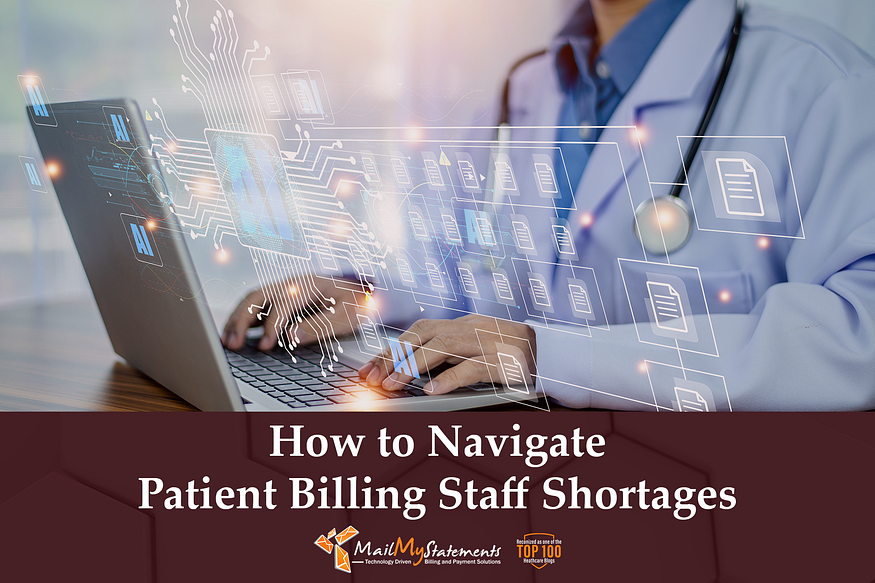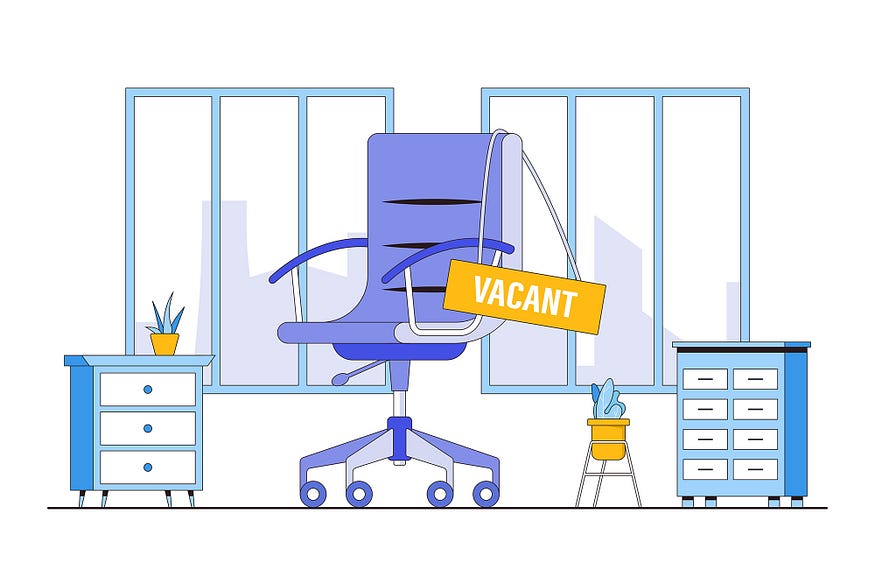How to Navigate Patient Billing Staff Shortages

The healthcare sector is experiencing a labor crisis, and billing departments are no exception. High employee turnover, unprecedented competition with more job openings than experienced candidates, and feelings of burnout have all taken their toll on billing and administrative staffing in healthcare, continuing even as the Covid-19 crisis begins to abate. With no end in sight, healthcare systems and medical practices must come up with innovative solutions to these severe billing staff shortages, such as automation and outsourcing.
Labor Shortages: The Bigger Picture

Billing staff shortages are part of a larger labor crisis that is affecting the healthcare industry as a whole. As of September 2022, the healthcare sector has one of the highest job opening rates in the United States, coming in second only to accommodation and food services; the US Department of Labor Statistics calculated that there were over 2 million job openings in the healthcare sector during this time. Although more recent data is not yet available, those who work in the field can attest to the fact that labor shortages continue through to the present.
This lack of personnel means that health systems must rely on existing employees to do more with less, leading to burnout and low morale in many departments — and more resignations. These patient billing staff shortages mean that billing departments are having difficulty meeting the demands of their healthcare organizations. This results in delayed payments, inaccurate claims submissions, and missed opportunities for timely reimbursements from insurance companies.
When billing staff is unable to keep up with the necessary tasks, it can have a ripple effect throughout the organization. Slower revenue cycles put a strain on already tight budgets; patients are left wondering why they haven’t received statements yet, or feel frustrated with their providers when overburdened billing and administrative staff make errors.
It’s clear that, without an end in sight for the labor shortage, the current system is unsustainable. Automation and outsourcing present a solution.
How Automation and Outsourcing Can Help with Staffing Shortages
One solution to this problem is to automate the billing process. Electronic medical records are already ubiquitous in healthcare; automated billing streamlines the billing process in the same way, increasing efficiency and decreasing the potential for human error. When accuracy and efficiency are improved, the result is faster payments for providers and improved customer service for patients.
It’s important to note that automating billing does not replace billing staff; instead, revenue-cycle automation allows billing staff to make better use of their time in the face of existing staffing shortages. Rather than having to spread a small team too thin, automation takes care of manual, tedious processes, freeing up human labor for direct, higher-level customer service and troubleshooting.
By partnering with a third-party organization, healthcare systems, and medical practices can focus on their core competencies while allowing experts to handle their billing needs. This can provide a quick solution, and it further reduces the burden on staff; partnering with an experienced automated billing service means support is in place to ensure a seamless roll-out of the new system.
Additional Benefits of Automation
Aside from the relief automation and outsourcing can provide to existing staff, there are a number of other benefits to automating the billing process.
- Automating billing processes allows for better tracking. This means providers can keep an eye on their revenue cycle more easily, and it also helps administrators manage accounts receivables and stay on top of payments.
- Advanced analytics make it easier to monitor progress, identify areas that need improvement, and quickly adjust methods as needed.
- Automation also allows for improved accuracy and speed when it comes to payments.
- When billing staff is freed up from manual tasks, they can focus more on customer service by answering questions, resolving disputes, and managing expectations throughout the billing process.
- Automating the billing process can reduce costs for healthcare systems; by eliminating manual labor and streamlining processes, automated billing services are able to operate at a lower cost than other methods.

In addition to these benefits, automation is simply the future of healthcare billing, so it’s important for healthcare organizations to stay ahead of the curve and make sure they are taking advantage of these new technologies. There will come a time — and it will be soon — that manual billing will be virtually unheard of in the healthcare sector. It’s better to make the transition to automated processes now rather than spending years losing time and money attempting to hold onto the old way of doing things.
Finding a Solution that Works for Your Practice
When it comes to finding a solution that works for your healthcare organization, there is no one-size-fits-all approach. Organizations must assess their individual needs and determine which combination of automation, outsourcing, and internal staffing will best address their labor shortages. Here are some questions to consider:
- What processes can be automated? What should billing staff continue to handle?
- How will patients benefit from an automated billing process?
- Will the new process streamline revenue cycles?
- What kind of support does a potential partner offer?
With the right combination of solutions in place, organizations can continue to provide high-quality services while navigating the challenges of billing staff shortages. MailMyStatements is an industry leader in the digitization and automation of billing processes and a HITRUST-certified provider. We offer a simple plug-and-play solution that improves patient experience, reduces overhead expenses, and helps practices and healthcare systems navigate shortages in billing and administrative staff.
Our solution meets the expectations of today’s patients with features like text payment alerts and other reminders, eStatements, and patient portals with white-label payment gateway solutions. Automating the payment process is one of the rare solutions that reduces costs and increases revenue while simultaneously improving patient satisfaction.
By investing in modern solutions, outsourcing billing to third-party providers, and taking steps to retain existing staff, healthcare organizations can effectively manage labor shortages and mitigate their effects on patient care and satisfaction. To learn more about MailMyStatements, contact us today.

Hugh Sullivan is the CEO of MailMyStatements, an industry-leading healthcare billing, and payments company. He has over 25 years of experience as a seasoned healthcare executive, was the co-founder of ENS Health — a highly successful national healthcare electronic data interchange company, and has served in various leadership roles within Optum, a UnitedHealth Group company. Considered as an industry thought leader, Hugh is an expert in using health IT to improve healthcare information exchange, which can enhance the quality of care, improve efficiency, and reduce costs.
#PatientStatements
You can follow Hugh on Twitter @hughdsullivan
Comments
Post a Comment